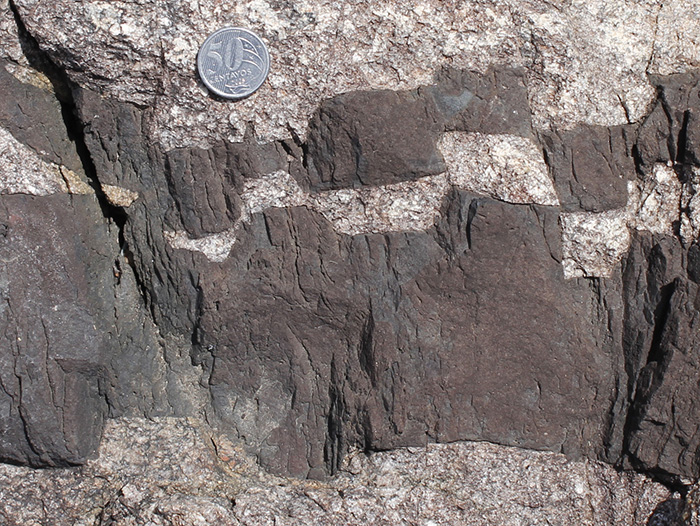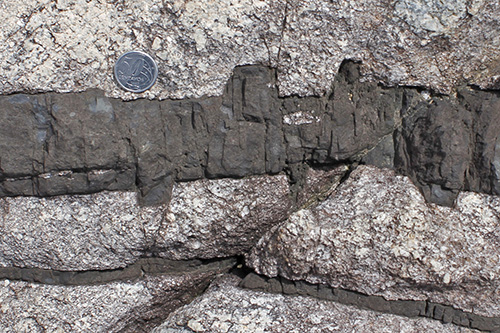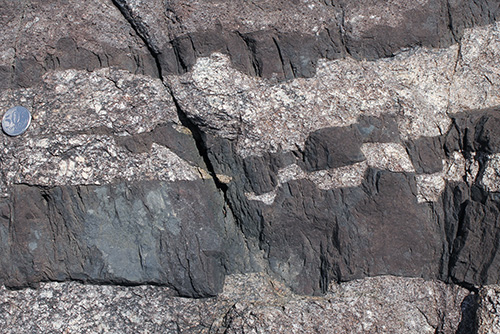Composite dykes, Porto Belo terrane, Zimbros Beach, Santa Catarina, Brazil
|
| This site records the intrusion of a composite dyke: mafic and felsic and their hybridization. Dyking efforts cause faulting of the host rock and these faults are exploited by the intrusive magma itself, causing blocky, angular contacts with the host rock. Photos from outcrops close to Praia Zimbros in Porto Belo, Santa Catarina, Brazil |


